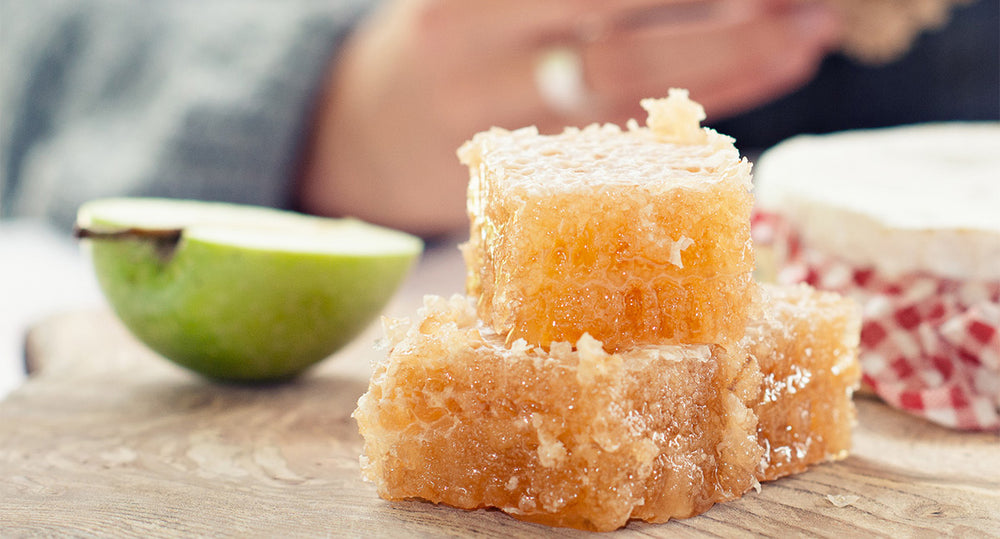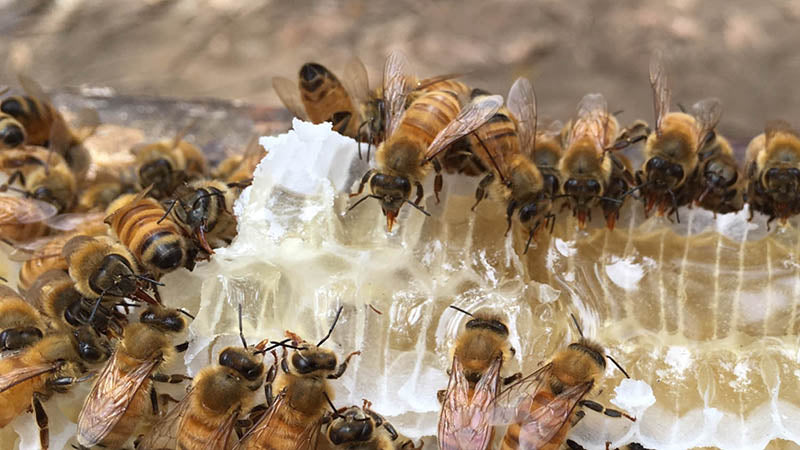Honey is the delicious result of bees collecting nectar from flowers. Bees collect the nectar from flowers, which are often found in remote and protected locations, meaning the apiaries are kept away from pests and chemicals, so the honeys produced are as pure as it comes.
Bees take the nectar back to the hive and deposit it into the honeycomb. During this process bees add an enzyme to the nectar, which turns sucrose into glucose and fructose. Bees fan this liquid with their wings until most of the water in the nectar has evaporated and the glucose and fructose bind to the remaining water.
This process creates honey, a delicious food, preservative and healing liquid in which bacteria cannot survive. Honey also contains hydrogen peroxide which can fight against bacteria. The antimicrobial activity in active healing honey is due to the enzymatic production of hydrogen peroxide.
Active honey produces microbe-killing levels of hydrogen peroxide when glucose oxidase, the enzyme incorporated into honey by bees, reacts with glucose and oxygen molecules in water.So if you are looking for a healing honey our bacteria busting antimicrobial honey can help to inhibit bacterial growth, reduce infection and enhance healing.






